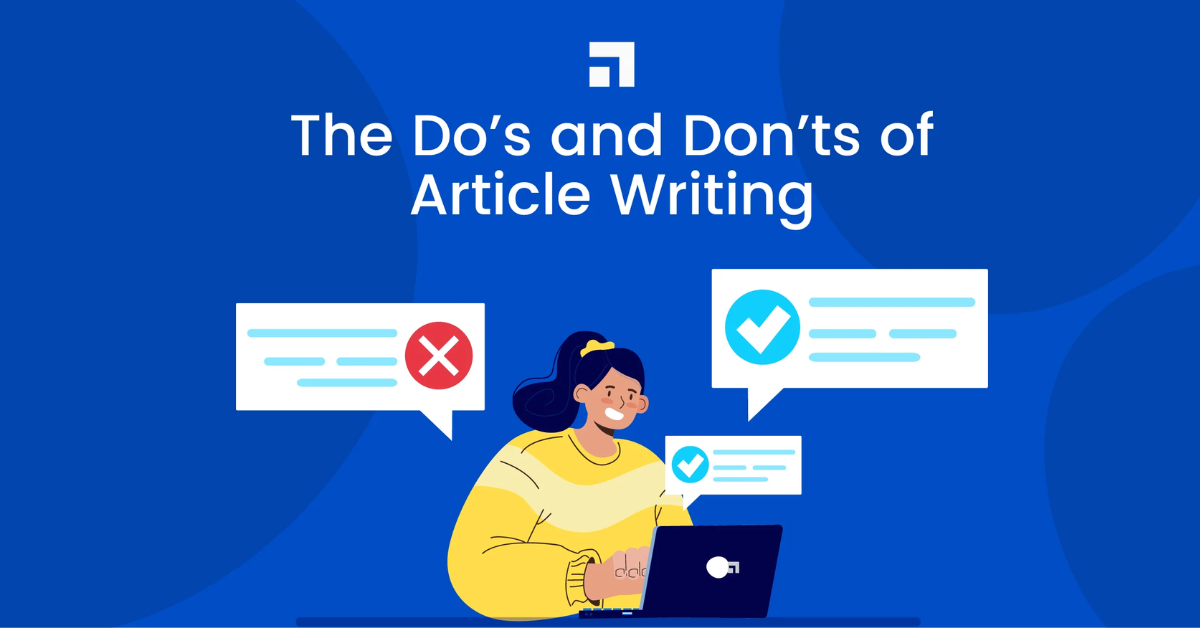9 Do's and Don'ts of Content Writing for an Ecommerce Website

The e-commerce world is very competitive, so creating attractive and interesting content is a key advantage. This content does more than just tell people about your products; it helps build trust and shows that you are an expert in your field.
By sharing high-quality and relevant content, you not only keep your customers engaged and informed but also make your brand stand out in a crowded market.
Content marketing is also way more affordable than other things in e-commerce. It is 62% cheaper and generates more leads than traditional marketing.
In this guide, I will explain the nine essential dos and don’ts of ecommerce content writing. You will learn effective strategies, how to optimize your content for search engines, and common pitfalls to avoid. Let’s get started!
Do’s of Content Writing for an E-Commerce Website
Below are the five do’s of content writing for an e-commerce website.
1. Identify your audience and goals
For content writing in e-commerce, first you have to identify your audience and their goals. You can't write good content if you don't know about your audience, their pain points, and what they expect from your product or service.
Marketers who tailor their campaigns to specific audiences see a 73% higher return on their investment (ROI) compared to those with a generic approach (source: demand metrics).
Try to present a solution in your content. So that the audience will engage more and will find your content more informative and relatable.
2. Write in an active voice
Always try to write your content in an active voice. Because when you make the content in first-person voice, it is easier to understand for the readers. For example:
Active: The customer carefully examined the product before adding it to their cart.
Passive: The product was carefully examined by the customer before being added to their cart.
Active: The delivery company shipped the package within 24 hours.
Passive: The package was shipped within 24 hours by the delivery company.
As you can see, the active one is easier and more understandable than the passive one. Also, try to use the storytelling approach to attract the customer.
Users like to read the content in narrative form more than the content in straight and cold form. Studies show that content that incorporates storytelling can increase conversions by up to 30%.
3. Add visuals
Do add visuals or infographics to your content for an e-commerce website.
Tweets with visuals receive 18% more clicks, 89% more likes, and a whopping 150% more retweets (source: sproutsocial).
Infographics are very attractive to human eyes. People retain 65% of information presented visually, compared to just 10% of text-based content.
4. Add customer testimonials
Adding authentic and original customer testimonials can help your audience develop trust in you. It helps build your brand's credibility. A large 99% of customers look for reviews when they shop online (SellersCommerce).
5. Use SEO techniques for your content.
Always try to use SEO techniques and strategies in your content. It will help your content rank higher in search results, ultimately driving more traffic and sales to your online store. Following are the benefits of using SEO techniques in your e-commerce content.
- Increases brand visibility
- Right targeted traffic
- Improves brand awareness
- Long-term benefit
4 don’ts of Content Writing for an E-commerce Website
The following are the don'ts of content writing for your e-commerce website.
1. Don’t use plagiarized content
In content writing for ecommerce, avoid using plagiarism or duplicate content. If you post or use someone else's content without asking them or giving credit, Then you will lose your brand's credibility. Make sure to check for AI similarities and avoid duplication to maintain originality and trustworthiness.
Search engines like Google and Bing penalize websites with plagiarized content. Moz states that duplicate content can negatively impact search rankings, potentially harming website visibility.
2. Avoid using wrong and irrelevant information
Just like the use of plagiarized content, you should also avoid using wrong and irrelevant information in your content. It can directly harm your brand's credibility, and your image in the eyes of customers will be damaged.
A 2019 Sprout Social survey found that 63% of consumers would stop using a brand if they discovered it had spread misinformation. Wrong information can lead to significant brand damage and reputational harm.
3. Stay away from fluff and jargon
The use of fluff and jargon can make your content complex, low quality, and difficult for customers to read and interpret.
As a result, your customers will leave your site quickly without making a purchase. That is why you should avoid using fluff or jargon in your content. If your content contains any, remove it and ensure that you check the readability score. Improve the readability of your content because clear and concise content will keep your audience engaged and more likely to buy from you.
4. Not checking grammatical errors
One of the common mistakes in content writing that you should avoid is not checking the grammar or punctuation errors in your content.
A 2020 Grammarly survey (sample size over 1,100 US adults) found that 74% of respondents believe common grammatical errors in a business's writing make the company seem less trustworthy.
Conclusion
Creating compelling and engaging content for your e-commerce website should not be complex. By following the above nine dos and don'ts, you can create content that gives information and value to its readers.
And later, they will be the leads and potential customers. Remember that you are writing for your customers, not for the search engine or anything else. Do keep the needs, pain points, and likes of your customers in mind.
You should also use SEO practices in the content so it will reach a wide audience. Try to make and publish your content regularly so you will be able to establish your brand authority quickly.

.png)
